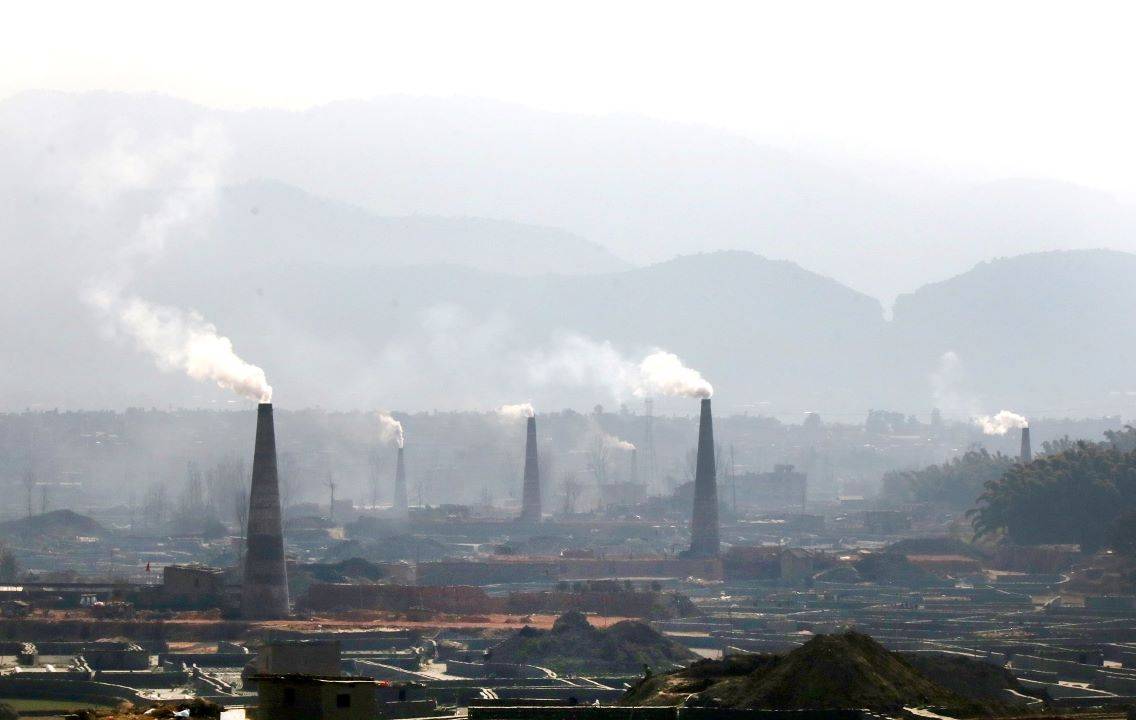
According to the US Embassy air quality measurement station in Phora Durbar, the AQI of Kathmandu exceeded 200, indicating that the air quality is harmful to breathe. As the AQI continues to fall, so does the visibility of the bowl-shaped capital.
"When I first arrived here, I could see the Dharahara tower more clearly, but now I have to look for it because the capital is shrouded in haze. I realized the extent of pollution that exists in Kathmandu Valley," Ramesh Devkota, a Kathmandu resident who visited the hilltop shrine of Aakash Bhairab, told media.
According to the Department of Environment, which is part of the Ministry of Forestry and Environment, the level of air pollution in Kathmandu Valley and the central and eastern parts of the country has increased due to local sources of pollution such as fires and the burning of agricultural residues in over 140 locations across the country, including Bara, Parsa, and Chitwan. Since a week, smoke from the burning has flowed in and deposited in the bowl-shaped valley, shrouding it. Wearing a mask, according to experts and doctors, can help to mitigate the symptoms in some ways.
Earlier this week, the Ministry of Health and Population urged the public to wear a face mask to help alleviate the effects of air pollution. Because of the severity of the air pollution, which disproportionately affects children, the elderly, respiratory patients, and heart patients, the Department of Environment has urged people of all ages to take extra measures while venturing out.
In recent years, the number of individuals suffering from respiratory disorders, lung cancer, heart disease, hypertension, and stroke has increased in Nepal as a result of air pollution. According to studies, 42,000 individuals died in Nepal in 2019 as a result of indoor and outdoor air pollution; 19% of the overall deaths due to air pollution were children under the age of five, and 27% were people over the age of 70. Despite the rising number of pollution-related patients and deaths, the government lacks a policy to control and combat it.
"I can't see Kathmandu because of the pollution. I came to Kirtipur to see the valley from a hilltop, but I couldn't see anything, so I'm going back to my room," Bishal Thapa lamented. Based on the impact of air pollution on public health, the degree of air pollution is split into different levels from 0 to 500, and the AQI of 201 to 300 has given Kathmandu Valley a purple colouring. This is a dangerous amount for human health. Pollution is reported to have increased significantly due to fires in many parts of the country and the burning of agricultural waste during this season.
Sunday domestic flights have generally been impacted as air pollution continues to grow. Poor visibility hampered flights to Pokhara, Bharatpur, and Tumlingtar, among other destinations, according to the Tribhuvan International Airport (TIA) Office. According to TIA Office spokesperson Teknath Sitaula, flights to three domestic destinations, including Pokhara, have been entirely disrupted. Flights to Simara began just a few minutes ago. There have been no flights to Pokhara, Bharatpur, or Tumlingtar.
Despite the fact that flights could not be flown to three destinations till now, they were operated to several locations when the weather cleared. Flights were disrupted for three days due to heightened air pollution in many parts of the country, including Kathmandu. Flights to Pokhara were also impacted on Friday and Saturday. Sitaula stated that while international flights were generally disrupted in the morning, they are now operating on a regular basis. Qatar Airways had to hold for almost two hours due to a missed approach.
















